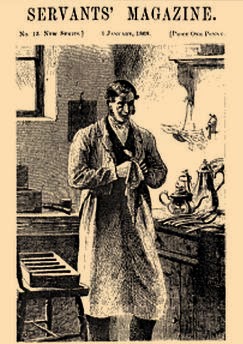British table manners in a plate of crisis as fewer households fork out for knives
USING a knife and fork at the table was regarded as an essential component of dining etiquette – as crucial as not eating with your mouth open. But research suggests the cutlery double act is being split up as sales figures show forks outselling matching knives by almost two to one. It seems using a knife and fork is rapidly becoming a thing of the past, as British families emulate the American “fork-only” dining habit, according to a new report. British dining etiquette is disappearing thanks to the soaring popularity of the US-style eating habits, a slump in dining out and supermarket ready meals. The report says that the increasing popularity of pre-cut pizzas, chips, burgers and pasta – all dishes where a knife is not required – is to blame.
Read Tanya Thompson's analysis here:
The US-style trend emerged after Debenhams' sale figures revealed that large, main meal forks were outselling their matching knives by almost two to one across the retailer's 155 UK stores. Further investigation revealed that London stores were spearheading the trend, with customers buying almost three forks to every knife.So great is the trend that the department store chain Debenhams has decided to launch a Civilised Dining campaign to protect the traditional British way of eating. Debenhams' spokesman Ed Watson said the store's research revealed that the popularity of fast food is the biggest culprit for abandoning traditional etiquette.
 |
| “Bad table manners can turn an enjoyable meal into an embarrassment.” |
Further research showed that almost 32 per cent of customers bought fewer knives because they now preferred to use forks on their own.
An additional 24 per cent were baffled by place settings and almost 28 per cent did not possess fish knives, and could see no reason for buying them.
 |
| “I'm sorry. You mean there is a difference between spoons?” |
Debrett's etiquette adviser Jo Bryant said good table manners should be second nature – or should appear to be. “When dining, it is essential to remember your manners and to use cutlery correctly. Bad table manners may offend your fellow diners and cause embarrassment.”
The research suggested the popularity of eating food in front of the television may also be having an impact. “Burgers seldom require the use of a knife, and ready meals are presented using pre-cut, bite-size portions, which slip easily on to a fork,” Mr Watson added. “Good table etiquette may seem like a trivial matter, but many people in Britain still regard it as an essential life skill.”
As part of the campaign, experts will be on hand from next month to offer advice on the correct form of dining etiquette to help customers at stores throughout the UK.
From The Scotsman
 |
Etiquette Enthusiast, Maura J. Graber, is the Site Editor for the Etiquipedia© Etiquette Encyclopedia






